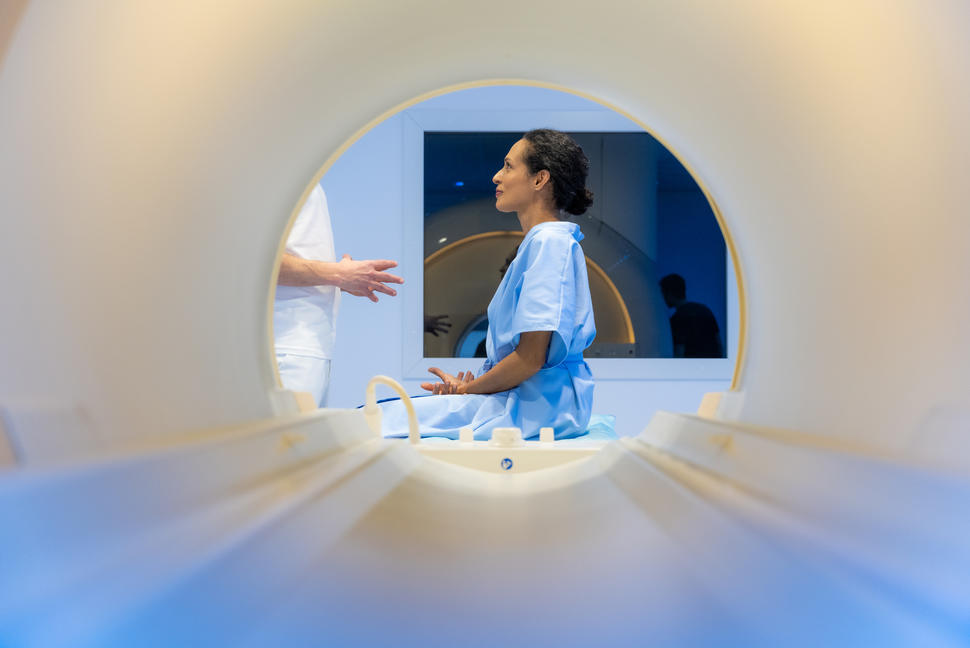Screening People at High Risk for Pancreatic Cancer May Help Them Live Longer
, by Edward Winstead
For people who are at high risk of developing pancreatic cancer, regular imaging tests to monitor the pancreas may help detect the disease at an earlier stage than when pancreatic cancer is typically diagnosed in the general population, according to a new study.
The study also suggests that detecting pancreatic cancer earlier through this type of surveillance may help people at high risk live longer than similar patients in the general population who were not at high risk of the disease.
Pancreatic cancer is often diagnosed only after the disease has spread within the body or reached an advanced stage. For more than two decades, researchers have been investigating ways to detect the disease in its earlier stages, when it might be more treatable.
The new findings are from a long-running cohort study led by researchers at the Johns Hopkins Kimmel Cancer Center’s Sol Goldman Pancreatic Cancer Research Center.
In the study, about 1,700 people at high risk for pancreatic cancer underwent annual imaging tests to check for signs of the disease. Each study participant had a family history of pancreatic cancer or had inherited genetic changes linked to an increased risk of the cancer.
For this latest update from the study, the researchers focused on 26 participants who had been diagnosed with pancreatic cancer through the surveillance program over two decades.
These study participants had a higher proportion of early-stage pancreatic cancer at the time of diagnosis compared with a similar group of people with pancreatic cancer in the general population who were not at high risk of the disease.
The 5-year survival rate after diagnosis was much higher among the program participants with pancreatic cancer than in the comparison group (50% versus 9%), according to results published in JAMA Oncology on July 3.
“This surveillance program has now been shown to make a difference in one of the deadliest cancers,” said Udo Rudloff, M.D., Ph.D., who treats patients with pancreatic cancer at NCI’s Center for Cancer Research and was not involved in the study.
“The new results demonstrate that you can detect tumors earlier through a screening program,” Dr. Rudloff continued, noting that surveillance programs include a small proportion of all patients with pancreatic cancer.
The disease tends to come back, he added, and more effective treatments are needed both to delay a recurrence and to treat recurrent pancreatic cancer.
An uncommon but often deadly disease
Pancreatic cancer is the eighth most common cancer in the United States, but it is the third leading cause of cancer death. Treatment options are limited.
Guidelines developed by pancreatic cancer experts recommend that people at high risk undergo monitoring for the disease. Because the cancer is rare, research studies aimed at detecting precancerous lesions and early-stage pancreatic cancers have focused on people at high risk.
Several years ago, the Hopkins researchers reported that surveillance could increase the chances of identifying early-stage pancreatic cancers.
“We’re learning that when patients are diagnosed at an earlier stage, and especially at stage I, they achieve a dramatically different long-term survival than people who were diagnosed with stage IV disease,” said study coauthor Michael Goggins, M.B.B.Ch., M.D., who directs the Pancreatic Cancer Early Detection Laboratory at Johns Hopkins.
New results from eight medical centers in the surveillance program
The new findings confirmed the results from the group’s earlier work and provided additional information. In the current study, the 5-year pancreatic cancer mortality rate was 43% for the 26 people in the surveillance program, compared with 86% for those in the matched comparison group.
Of those 26 people, 10 (38.5%) were diagnosed with stage I cancer and 8 patients (30.8%) had stage II cancer; in the comparison group, 155 patients (10.3%) had stage I cancers and 377 (25.1%) had stage II cancers. In addition, tumors in the study participants tended to be smaller than those in the comparison group.
To monitor the study participants, the researchers used MRI scans and/or endoscopic ultrasound, which captures images of the pancreas, bile ducts, and digestive tract.
The study was conducted at eight medical centers that have experience treating people with pancreatic cancer. Only people who were found to be at high risk of the disease were eligible to enroll.
“Pancreatic cancer surveillance involves multidisciplinary teams of experts who can capture and assess test results,” Dr. Rudloff said. Community hospitals that see few people with pancreatic cancer each year may lack the expertise needed to conduct surveillance, he added.
Risks and benefits of pancreatic cancer surveillance
Annual screening for pancreatic cancer has potential risks, including false-positive results that can lead to unnecessary additional testing and medical procedures, and false-negative results that can lead to early-stage cancers being missed.
Another potential risk is that undergoing annual surveillance might increase a person’s worry about developing cancer and lead to psychological distress. A previous study, however, had suggested that starting surveillance can reduce worry about cancer for some individuals.
“By and large, people who are enrolling in [these surveillance studies] want to be able to manage their cancer risk,” said Dr. Goggins. “But more research needs to be done to assess whether [these] people are psychologically worse off or better off than people who don’t undergo surveillance.”
The investigators have also been exploring blood tests and other tools that could potentially help detect early signs of pancreatic cancer.
“We need to learn how to better estimate the risk of pancreatic cancer and to identify people who most need surveillance,” Dr. Goggins said.
